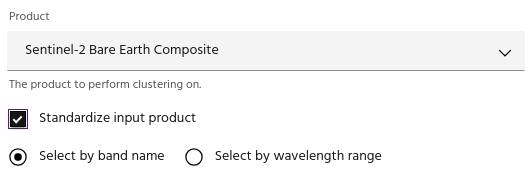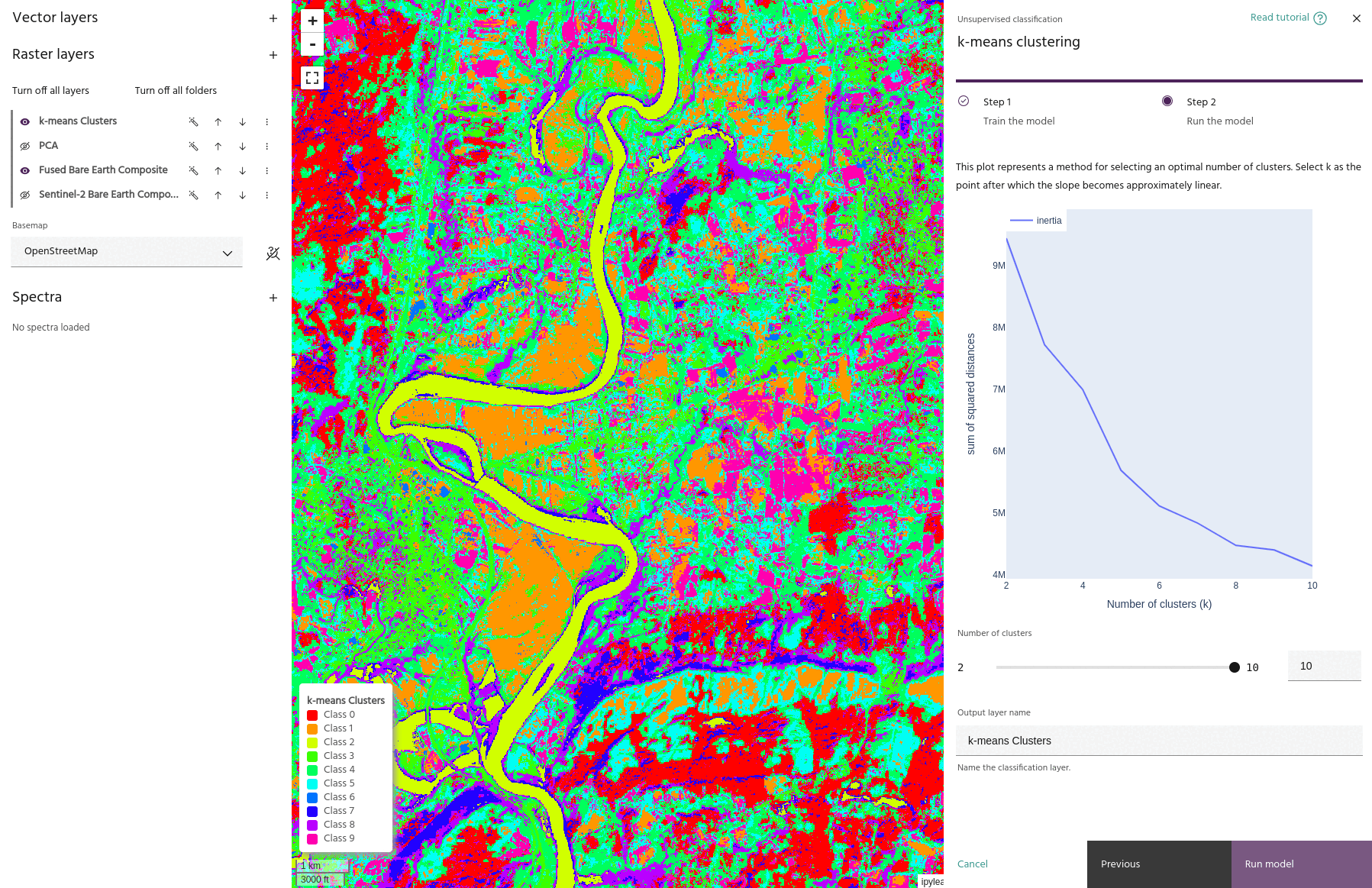k-means clustering
k-means clustering is an unsupervised classification technique that automatically finds groupings of data based on their spectral characteristics. k-means clustering does not assign meaning or labels to the clusters themselves, but rather relies on the user to interpret the classification.
Tip
More information about k-means clustering, including a mathematical derivation, can be found here.
Prepare data
The k-means clustering dialog is split into two pages. The first contains the standard selection of the input product, bands and AOI for analysis, along with two parameters specific for the k-means computation.
Standardize input product

Use this checkbox to standardize the selected input data by the mean and standard deviation of the data:
Note that the data are scaled band-by-band - after this operation, each band will have a mean of 0 and standard deviation of 1.
Candidate k values

When training the k-means model, one model will be created for each value in this range. This allows you to check several k-values (corresponding to the number of clusters in the data) before applying the clustering to the entire dataset.
Train model
Click the Train model button to compute the models defined by your choice of
k-values.
Investigate and apply the model

The second page of the k-means clustering dialog allows you to interrogate the models defined by your chosen k-values, as well as give the final output layer a name.
Inertia plot
The plot shows the "inertia" of the model at each selected k-value. This value represents the total sum of squared distances for each value in the dataset with each model.
Tip
Generally, an appropriate k-value will be a point where this curve starts to flatten, representing a point of diminishing returns with an increased number of clusters.
Number of clusters

Adjusting this slider will change the model to the one corresponding to the selected number of k-values.
Run model
When you are happy with your choice of k value, click Run model to finalize
the output layer in the raster list.
Warning
Although the model will be applied dynamically to the layer, keep in mind that it was computed over a specific AOI, and the inertia values are only valid over the input AOI. If you are moving to a new geologic regime, it is often necessary and wise to recompute the model in the new area instead of relying on the original statistics.